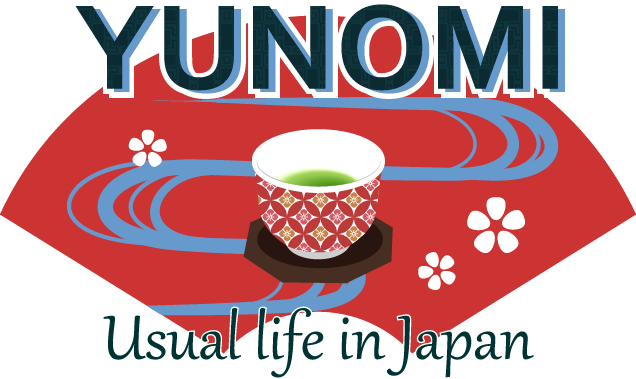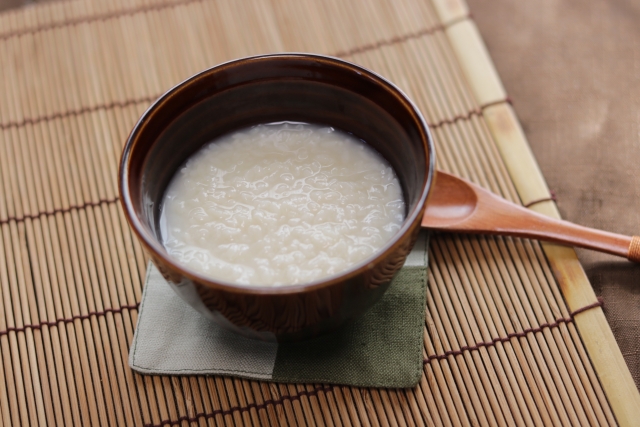Amazake is a traditional Japanese drink with a naturally sweet, creamy taste and a gentle warmth.
Despite its name—literally “sweet sake”—amazake is often alcohol-free and enjoyed by children and adults alike.
What Is Amazake?
Amazake is a fermented rice drink whose texture ranges from smooth and silky to thick and grainy depending on the recipe.
It is usually served warm in winter and is considered one of Japan’s oldest comfort drinks, with roots traced back to the Nara period.
Two Types: Koji Amazake vs. Sake Lees Amazake
Koji Amazake

- Made by fermenting steamed rice with rice koji (麹), a natural fermentation culture.
- Naturally sweet: enzymes break down rice starch into glucose—no added sugar needed.
- Alcohol-free, suitable for children and for everyday wellness.
- Contains B vitamins, amino acids, and digestive enzymes.
Sake Lees Amazake
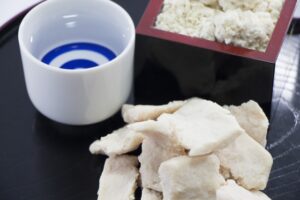
- Made from sake lees (the byproduct of sake brewing).
- Can contain trace amounts of alcohol; traditionally sweetened with sugar.
- Sharper, more robust flavor than koji-based amazake.
Both styles are popular in winter, but koji amazake has become especially trendy for its alcohol-free profile and gut-friendly image.
Why Amazake Is Alcohol-Free (Child-Friendly)

Koji amazake contains 0% alcohol because its sweetness comes from enzymatic conversion rather than alcoholic fermentation.
For festival service, amazake is typically heated; if sake lees are used, warming helps evaporate residual alcohol.
This is why families comfortably serve amazake to children during cold seasons.
Cultural Role: New Year & Shrine Festivals
New Year (Oshōgatsu)
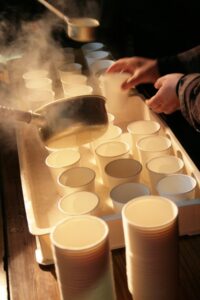
Many shrines offer free cups of amazake to visitors on New Year’s Day.
After late-night or early-morning hatsumōde (the year’s first shrine visit), the sweet, steamy drink warms the body and spirit.
Shrine Festivals & Street Stalls
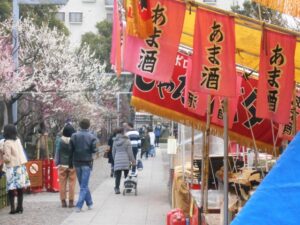
In winter festivals, amazake stalls appear alongside takoyaki and taiyaki.
Paper cups, visible steam, and gentle sweetness evoke nostalgic childhood memories for many Japanese people.
Beyond celebration, amazake at shrines expresses hospitality—an invitation to feel welcome and cared for.
Taste, Nutrition, and Health Benefits

Amazake is sometimes nicknamed a “drinkable IV drip”. While the phrase is marketing shorthand, it reflects its nutrient-rich profile:
- Natural glucose for quick energy
- B vitamins and essential amino acids
- Dietary fiber and digestive enzymes
- Alcohol-free (koji type) or very low alcohol (sake lees type)
Flavor profile
Naturally sweet, creamy, mild rice aroma.
Thickness varies—some prefer it grainy; others dilute with water or milk for a smoother sip.
Iced amazake has also become a popular summertime refreshment.
How Japanese People Enjoy Amazake at Home
- Warm gently in a pot or microwave (avoid boiling for best aroma).
- Blend with soy milk or regular milk for extra smoothness.
- Add grated ginger for warmth on cold days.
- Use as a natural sweetener in smoothies, pancakes, and desserts.
- Choose bottled, sugar-free / alcohol-free varieties sold year-round in supermarkets.
Amazake vs. Sake — What’s the Difference?
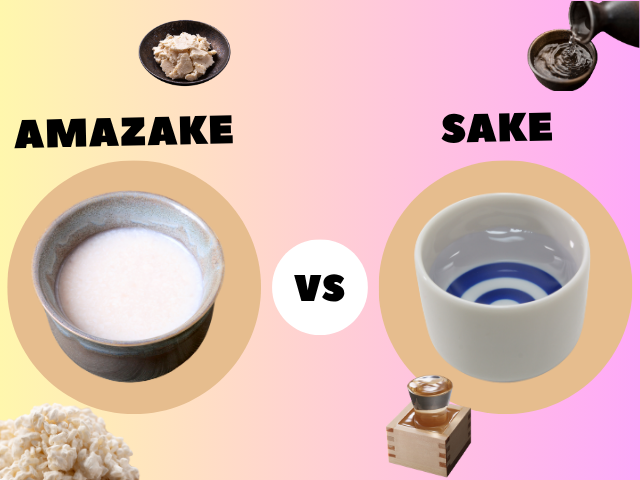
| Feature | Amazake | Sake |
|---|---|---|
| Alcohol | 0% or very low | ~15–20% |
| Base | Rice & koji or sake lees | Rice, koji, yeast |
| Flavor | Sweet, creamy | Dry to sweet, aromatic |
| Typical Use | Winter drink, festivals, home wellness | Meals, toasts, celebrations |
| Child-Friendly | Yes (koji type) | No |
Amazake represents the soft, nourishing side of Japanese fermentation, whereas sake is its refined, celebratory counterpart. Curious about sake itself? Read our main guide: Sake .
